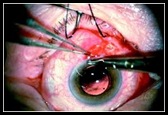Monday 31 October 2011
Sunday 23 October 2011
Gilad Shalit Comes Home
I repost without frills this ultra-moving video from United With Israel.
UWI wrote:
“You will see the incredible events unfold, as Gilad Shalit returns home to his country, his people and his beloved family.
“You are guaranteed to cry tears of joy…
“Gilad, we are so happy that you are home. You are part of us and we are part of you. Today, you are our son, our brother, our dear family member. All of Israel is One. We are unified in love and concern for each other. WELCOME HOME!
“BARUCH HABA” – Welcome Home and be Blessed!”
msniw
Wednesday 12 October 2011
Have You Ever Seen An Onion Cry?
Article first published as Have You Ever Seen An Onion Cry? on Technorati.
 You walk into your surgeon’s consulting room. He smiles broadly, asks after your health and invites you to lie down. Then he stabs you in the eye.
You walk into your surgeon’s consulting room. He smiles broadly, asks after your health and invites you to lie down. Then he stabs you in the eye.
Later, as the effect of the local anaesthetic wears off and you begin dancing on the ceiling, the last thing on your mind is medical politics.
So I was infuriated by a story in Saturday’s Mail Online claiming that British doctors are being pressurised to use Avastin, a cheap alternative to Lucentis when treating macular degeneration, an eye condition which may lead to blindness.
It’s a long time since I’ve read such cheap, scaremongering sensationalism in the name of medical journalism and want to put the record straight on many issues.
When some years ago, I began treatment by Avastin in my left eye for ‘wet’ Age Related Macular Degeneration , as opposed to the much more expensive Lucentis, I was informed (my paraphrase):
- The term ‘AMD’ is a misnomer because the condition may affect people even in their 20s.
- Avastin was first approved by the American Food and Drug Administration to treat metastatic colorectal cancer.
- Genentech (since merged with Roche), the company which manufactures both drugs, produced a ‘label’ explaining the risks and benefits involved.
- Avastin works by blocking “vascular endothelial growth factor (‘VEGF’)”. It has since been used ‘off label’ by ophthalmologists to treat AMD and similar conditions as research showed that VEGF to be a cause of the growth of the abnormal vessels causing such conditions.
Before treatment, I was advised in writing of the alternatives available and of possible complications from both drugs. Either could produce a stroke or heart attack.
The Daily Mail claimed that dozens of U.K. ‘primary care trusts’ have told consultants to use Avastin which is unlicensed there and costs only £50.00 a shot as opposed to Lucentis, which is licensed for use but costs about £900 per injection and is approved by ‘NICE’ - the National Institute for Health and Clinical Excellence.
The report argued that as Avastin is not marketed for eye treatment pharmacists have to split vials of the drug into far smaller doses than when it is used to treat cancer.
In the U.S., the Department of Veterans Affairs last month stopped its use after reports of infections.
The report also alleged that some patients have lost their remaining sight after treatment and that one man is suing for £2.6million for loss of sight and brain damage as a result of an infection.
If like me and thousands of other patients, he was given written advice and asked to sign a consent form before treatment, I can’t believe he has a case.
That aside, the Mail article confirmed: “Roche, makers of Avastin, is not obliged to test its use in AMD, so publicly funded trials are under way. In April, a U.S. trial found the two drugs were equally effective in treating AMD after one year.”
The report added: “The rate of hospitalisations was 24 per cent for Avastin and 19 per cent for Lucentis. Some doctors attribute infections from Avastin to contamination by splitting vials into small doses.”
Writing from personal experience, I confirm I was treated with a combination, first of photodynamic therapy (‘PDT’) and then several Avastin injections and had a further shot after the initial course when the problem appeared to have recurred.
Although I experienced severe short-term pain after each injection, there was no infection and the macular has since been stable.
However I have developed a further problem with epiretinal membranes in both eyes which may have to removed with a surgical technique called an ‘epiretinal membrane peel’. This is when you would see an onion cry!
msniw


